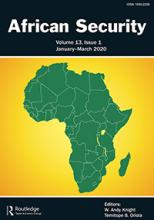/ library resources
Showing items 1 through 9 of 13.The recent spate of violence mostly in north-central and southern Nigeria, typically credited to conflicts between herders and farmers, and the reactions, narratives, and representations that have attended them, calls for an examination of core security questions: who or what is to be secured, fr
In the context of commercial agriculture in Vietnam, this study investigates rural youth livelihood aspirations through an analysis of young people’s value for family farming and an assessment of whether or not they foresee agriculture as their main occupation.
Land has historically been a focal point of conflict, especially in Fragile and Conflict-affected Settings (FCS), where disputes over forests and land use often intersect with broader socio-political dynamics, including unfair resource allocation, marginalization, and governance challenges.
The youth unemployment situation is an essential component of the current agricultural policy agenda of the Federal Government of Nigeria. Deep-rooted debates on finding a lasting solution to this problem using agriculture have been targeted as one of the panaceas.
Rapid population growth in fertile agricultural lands of East Africa creates land scarcity, which has become a major hindrance to land access for the introduction of new horticultural crops.
The recent spate of violence mostly in north-central and southern Nigeria, typically credited to conflicts between herders and farmers, and the reactions, narratives, and representations that have attended them, calls for an examination of core security questions: who or what is to be secured, fr
Women play an increasingly greater role in agriculture. Ensuring that they have opportunities—equal to those of men—to participate in transforming agriculture is a prerequisite for sustainable intensification.
Women play an increasingly greater role in agriculture. Ensuring that they have opportunities—equal to those of men—to participate in transforming agriculture is a prerequisite for sustainable intensification.
This paper first presents a clustering of women based on the characterization of their distinct access rights to néré. Secondly, the types of access rights are characterized also in spatial terms, based on the type of land use where the women harvesting is exercised.
Pagination
Land Library Search
Through our robust search engine, you can search for any item of the over 73,000 highly curated resources in the Land Library.
If you would like to find an overview of what is possible, feel free to peruse the Search Guide.




